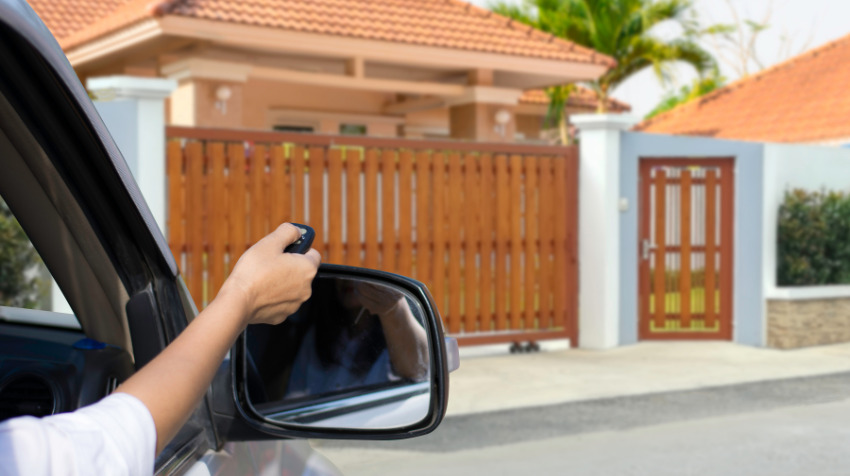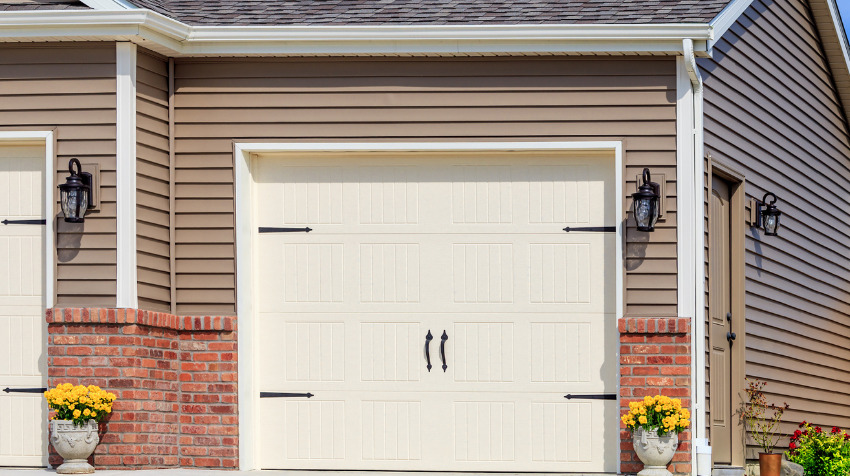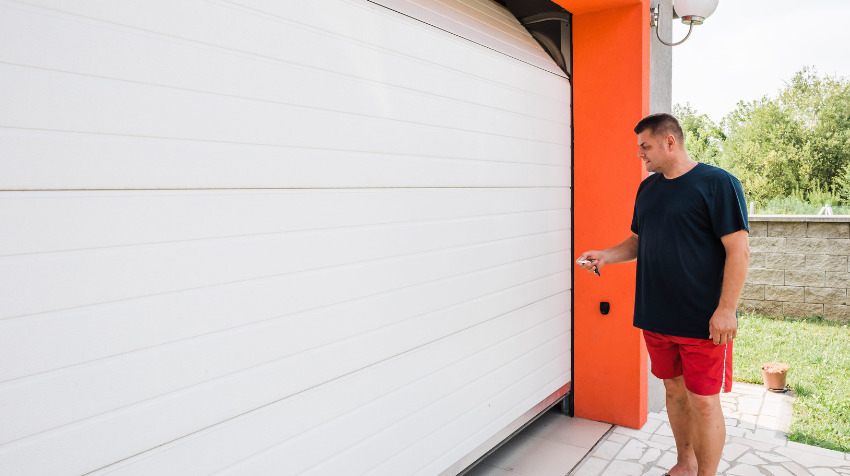Solving Garage Door Woes: Essential Troubleshooting Tips for a Smooth Automatic Access
Imagine pulling up to your house after a long day of work, and the automatic garage door opens smoothly and effortlessly like a hot knife through butter. It’s the kind of feeling that brings a sense of relief, knowing you won’t have to struggle with opening the door manually or getting out in the rain.
However, what happens when that trouble-free access becomes troublesome? Don’t worry; we’ve got you covered.
Automatic garage doors can be incredibly convenient until they start causing problems. From remote control issues to sensor malfunctions, power failures, and more, there are many reasons why your garage door may not function correctly.
Fortunately, troubleshooting these issues is relatively simple if you know what to look for. With our tips on handling common problems and maintaining your automatic garage door system properly, you’ll be able to ensure that it works flawlessly whenever you need it.
So let’s dive in!
Common Issues with Automatic Garage Doors
Having problems with your garage door opener? Don’t worry, you’re not alone.
There are a few common issues that homeowners face when it comes to automatic garage doors. One of the most frequent problems is related to safety features. Many modern openers come equipped with photo-eye sensors that detect any objects in the path of the door. If these sensors become misaligned or dirty, they can cause the door to stop functioning properly.
Another issue that often arises is a malfunctioning remote control. Sometimes, this can be as simple as replacing batteries or reprogramming the remote. However, if neither of those solutions work, there may be an issue with the receiver in the opener itself.
In order to diagnose and fix any problems with your garage door opener, it’s important to have a basic understanding of how it works and what components are involved.
Now, let’s move on to troubleshooting tips for your automatic garage door remote control…
Troubleshooting the Remote Control
When you’re having trouble with your automatic garage door remote control, there are a few things you can try before calling a professional.
First, check the batteries to make sure they’re not dead or low.
If that doesn’t work, try reprogramming the remote by following the manufacturer’s instructions.
And if all else fails, consider replacing the remote altogether.
By troubleshooting these key points yourself, you may be able to save time and money on repairs.
Check the Batteries
Ensure the batteries are fully charged to prevent potential issues with your device. Battery replacement is one of the most common troubleshooting techniques for remote controls. If you notice that the remote control isn’t functioning correctly, it’s recommended that you replace the batteries first before trying any other troubleshooting methods.
To evoke emotions in our audience, consider these three points:
- Frustration caused by a malfunctioning remote control can be easily avoided by checking and replacing batteries regularly.
- The cost of replacing batteries is minimal compared to having to call a professional repair service for a more severe issue.
- By taking care of your automatic garage door’s remote control, you can ensure its longevity and reliability.
If after replacing the batteries, your remote control still isn’t working correctly, then it may be time to reprogram it. This process will reset the device and allow it to connect with your automatic garage door opener again.
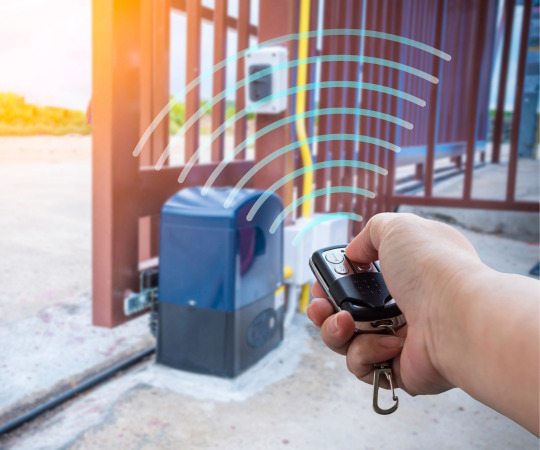
Reprogram the Remote
To successfully reprogram your remote, simply follow the steps provided in the user manual. Did you know that 85% of garage door opener problems are resolved by simply resetting the remote control? Before proceeding with this troubleshooting step, make sure that your remote is compatible with your garage door opener model. Older models may require different programming procedures compared to newer ones.
One common reason why a remote needs to be reprogrammed is due to signal strength issues. If your garage door doesn’t respond when you press the button on your remote, it could be because the signal isn’t reaching the opener’s receiver. To fix this problem, try moving closer to the opener or replace the battery in your remote as low batteries can cause weak signals.
Once you have completed these steps and still find that your remote is not working properly, it may be time to consider replacing it.
Replace the Remote
Now it’s time for you to swap out the remote for a new one. Before purchasing a new remote, make sure that it’s compatible with your garage door opener model. You can check this information in the owner’s manual or by contacting the manufacturer. Once you have the right remote, follow the instructions for programming it to match your opener’s code. This process varies depending on the brand and model of your garage door opener, but typically involves holding down a button on both the remote and the opener until they sync up.
Replacing your remote may seem like a hassle, but it can save you from further frustration down the road. A malfunctioning remote can cause unnecessary wear and tear on other components of your garage door system if not addressed promptly. Plus, having a working remote ensures that you have easy access to your garage without having to manually open and close the door each time.
In case replacing your remote does not solve your issue, read on about fixing sensor problems which could be affecting how well your automatic garage door functions.
One potential reason why your automatic garage door isn’t functioning correctly might be due to faulty sensors that detect objects in its path.
Fixing Sensor Problems
Fixing sensor issues is like being a detective, carefully examining and analyzing the clues to find the root of the problem. If your garage door isn’t closing or opening properly, it’s possible that your sensors are misaligned or there’s an obstruction detection issue. Here are some tips for fixing these problems:
- Check if your sensors are aligned: The first thing you need to do is check if the sensors on either side of your garage door are aligned with each other. If they’re not, try repositioning them until they line up perfectly.
- Clean the lenses: Dust, dirt, and debris can accumulate on the lenses of your sensors over time, which can cause problems with their functionality. Use a soft cloth to clean them regularly.
- Look for obstructions: Sometimes objects such as leaves or spider webs can block one of your sensors, causing it to malfunction. Inspect both sides of your garage door to make sure there aren’t any physical obstructions.
Addressing power issues is crucial when troubleshooting automatic garage doors. By checking if everything is plugged in correctly and inspecting circuit breakers, you may be able to fix any electrical issues causing problems with your door’s performance.
Addressing Power Issues
You’re going to love learning about how to make sure your power is running smoothly so you can keep enjoying the convenience of a functioning garage door.
One common issue with automatic garage doors is power surges. Power surges happen when there’s an unexpected increase in electrical current, which can damage the circuits and components of your door opener. To avoid this problem, it’s important to use surge protectors and make sure your electrical connections are secure.
Another cause of power issues could be faulty or old wiring. If you suspect that this may be the case, it’s best to call a professional electrician who can diagnose and fix any underlying problems.
It’s also recommended to periodically check for loose wires or frayed cables that could potentially cause an electrical hazard. By taking these precautions, you’ll ensure that your automatic garage door receives consistent power and operates safely and efficiently.
Now let’s move on to maintaining your automatic garage door…
Maintaining Your Automatic Garage Door
Keeping your garage door in top shape is essential for hassle-free access to your vehicle, so let’s explore some easy-to-follow maintenance techniques.
One of the first things you can do is lubricate all moving parts – hinges, rollers, and tracks included. This will prevent friction from building up over time and help to reduce wear and tear on your door. Use a silicone-based lubricant that won’t attract dirt or dust, and apply it sparingly to each part.
Another important aspect of maintaining your automatic garage door is rust prevention. Depending on where you live, rust could be a major problem due to humidity or salty air. To prevent rust from forming on metal parts of the door or tracks, use a rust inhibitor spray regularly. This will protect against any corrosion that could cause damage to the mechanics of your door over time.
By following these simple steps, you can ensure that your automatic garage door stays in good working condition for years to come! Now let’s discuss when it’s time to call a professional for assistance with more complex issues.
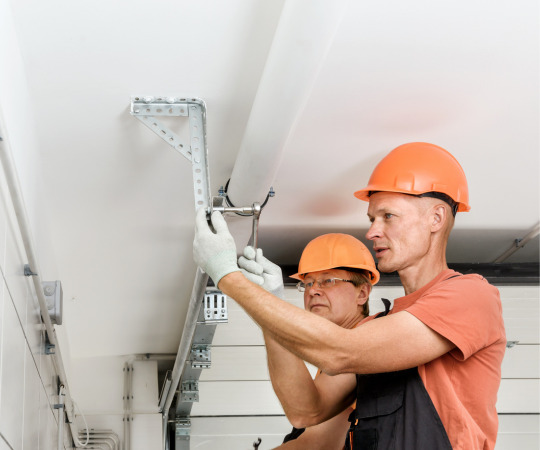
When to Call a Professional
If you’re unsure about the condition of your automatic garage door or experiencing any issues, it’s best to leave it to the professionals for a quick and efficient solution. While DIY repairs may seem like a cost-effective option, they can actually end up causing more harm than good.
Here are some situations where calling a professional is necessary:
- Emergency situations: If your garage door suddenly stops working in the middle of the night or during extreme weather conditions, it’s important to call a professional right away. Trying to fix the issue yourself can be dangerous and could potentially make matters worse.
- Lack of experience: Automatic garage doors are complex systems that require specialized knowledge and tools for proper repair. Attempting to fix an issue without adequate experience can result in further damage to your door or even personal injury.
- Warranty concerns: Many manufacturers require professional installation and repair in order for their warranties to remain valid. Attempting DIY repairs could void any warranty coverage you have.
- Safety concerns: Garage doors operate under high tension and can be dangerous if not handled properly. A professional technician has the necessary training and equipment to safely diagnose and repair any issues with your automatic garage door.
In short, while DIY repairs may seem tempting, it’s always best to err on the side of caution when dealing with automatic garage doors. Call a professional for peace of mind knowing that your door will be repaired correctly and safely.
Frequently Asked Questions
What is the average lifespan of an automatic garage door?
The average lifespan of an automatic garage door can vary depending on several factors. These factors include the quality of the materials used in its construction, how often it’s used, and whether or not it receives regular maintenance.
On average, a well-maintained automatic garage door can last anywhere from 15 to 30 years. However, if neglected and not properly maintained, it may only last a fraction of that time.
To ensure the longevity of your automatic garage door, be sure to follow recommended maintenance requirements such as cleaning and lubricating its moving parts regularly. By taking proper care of your automatic garage door, you can help ensure trouble-free access for many years to come.
Can I install an automatic garage door opener myself or should I hire a professional?
When it comes to installing an automatic garage door opener, you might be wondering if you can do it yourself or if you should hire a professional. While DIY installation may seem like a cost-effective option, it’s important to consider the potential risks involved.
A professional installer will have the experience and knowledge necessary to ensure your opener is installed correctly and safely. Plus, they often offer warranties on their workmanship and materials used. On the other hand, hiring a professional can be costly upfront.
Ultimately, the decision between DIY vs professional installation depends on your comfort level with home improvement projects and budget constraints. Before making a decision, weigh the pros and cons carefully to determine which option is best for you.
How often should I lubricate the moving parts of my automatic garage door?
To keep your garage door functioning smoothly, regular lubrication of its moving parts is crucial. The frequency of lubrication depends on the usage and climate conditions in your area. It’s recommended to lubricate the hinges, rollers, and tracks of your garage door every six months. This prevents rust and ensures a smooth operation.
When it comes to choosing the best lubricant for garage doors, avoid using oil-based or silicone-based products as they tend to attract dirt and debris. Instead, opt for lithium-based grease or white lithium spray as they’re specifically designed for use on garage doors.
Properly lubricating your automatic garage door is an easy maintenance task that can prevent costly repairs down the line.
Are there any safety features I should look for when purchasing a new automatic garage door opener?
When purchasing a new automatic garage door opener, it’s important to consider the safety features that come with it. One key feature to look for is sensors, which ensure that the door doesn’t close on anything or anyone in its path. This provides an added layer of security and can prevent accidents from occurring.
Another benefit of smart technology is the ability to monitor your garage door remotely through a smartphone app. This allows you to check if the door is closed or open, giving you peace of mind when away from home.
By investing in an automatic garage door opener with these safety features and smart technology capabilities, you can feel confident that your family and belongings are well-protected.
How do I reset the code on my garage door opener keypad?
Resetting the code on your garage door opener keypad is a simple task that can be done in just a few minutes.
First, locate the ‘learn’ button on your opener motor unit and press it until the indicator light blinks.
Then, enter your new desired code on the keypad and press ‘enter’.
If you encounter any issues during this process, don’t panic! There are several troubleshooting tips that can help you resolve common problems such as incorrect code entry or malfunctioning keypad buttons.
With these handy tips in mind, you’ll be able to reset your garage door opener keypad with ease and enjoy worry-free access to your home’s garage.
Conclusion
Congratulations! You’ve successfully troubleshooted your automatic garage door and fixed the issue. Now, you can enjoy the convenience of trouble-free access to your garage once again.
Remember, regular maintenance is crucial for preventing future problems with your automatic garage door. Keep an eye on the sensor alignment and clean any debris that may be blocking them. Test the remote control periodically to ensure it’s working correctly, and check for power issues if necessary.
As they say, an ounce of prevention is worth a pound of cure. By taking care of your automatic garage door, you’ll save yourself time, money, and frustration in the long run. So keep these troubleshooting tips in mind and don’t hesitate to call a professional if you encounter more complicated issues. After all, it’s better to be safe than sorry!
Related Source

